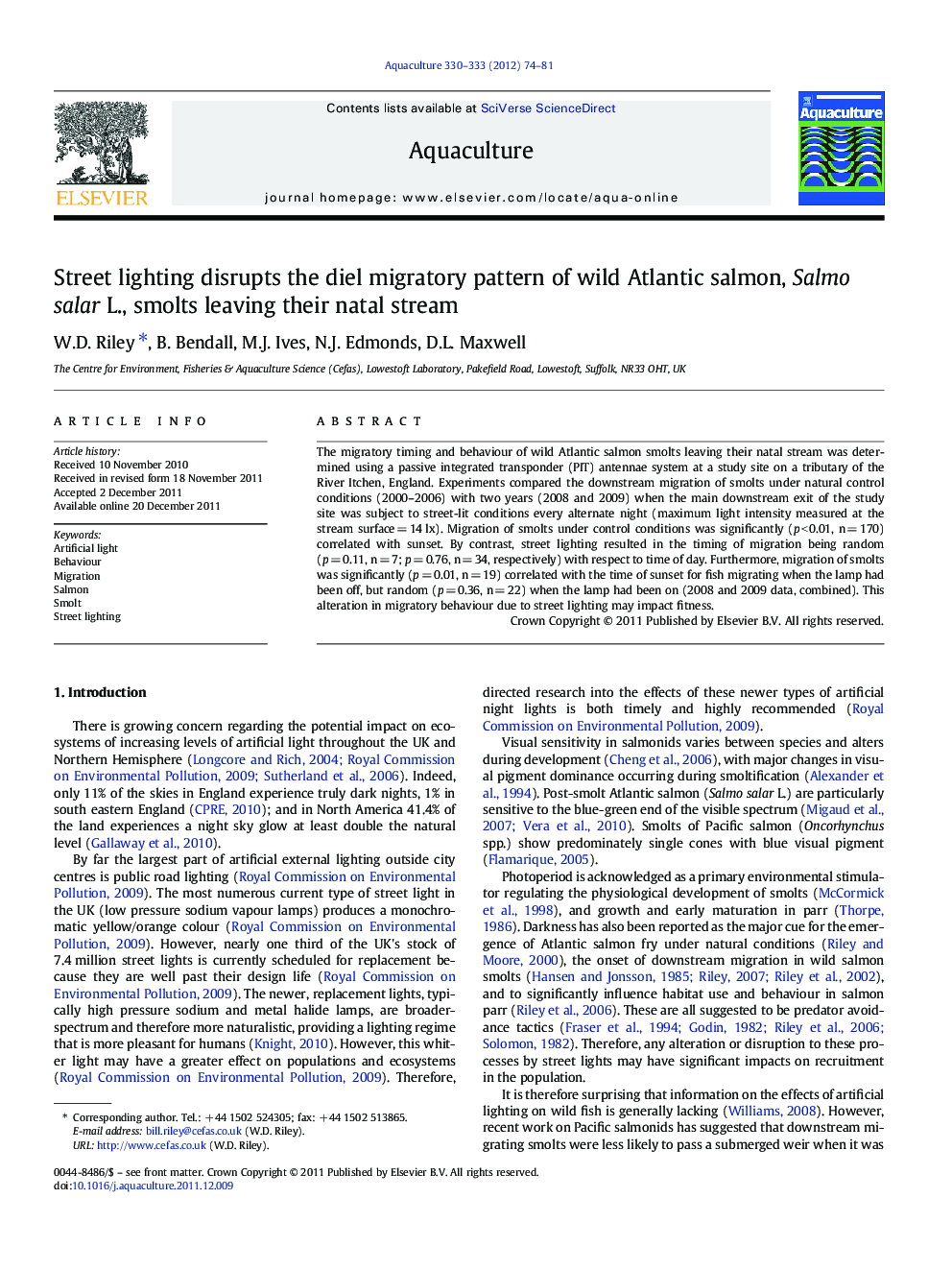| Article ID | Journal | Published Year | Pages | File Type |
|---|---|---|---|---|
| 2422673 | Aquaculture | 2012 | 8 Pages |
The migratory timing and behaviour of wild Atlantic salmon smolts leaving their natal stream was determined using a passive integrated transponder (PIT) antennae system at a study site on a tributary of the River Itchen, England. Experiments compared the downstream migration of smolts under natural control conditions (2000–2006) with two years (2008 and 2009) when the main downstream exit of the study site was subject to street-lit conditions every alternate night (maximum light intensity measured at the stream surface = 14 lx). Migration of smolts under control conditions was significantly (p < 0.01, n = 170) correlated with sunset. By contrast, street lighting resulted in the timing of migration being random (p = 0.11, n = 7; p = 0.76, n = 34, respectively) with respect to time of day. Furthermore, migration of smolts was significantly (p = 0.01, n = 19) correlated with the time of sunset for fish migrating when the lamp had been off, but random (p = 0.36, n = 22) when the lamp had been on (2008 and 2009 data, combined). This alteration in migratory behaviour due to street lighting may impact fitness.
Research highlights► Smolt migration under control conditions was compared with that under street lighting. ► Under control conditions migration was significantly correlated with sunset. ► Under street lighting migration was random with respect to time of day. ► Alteration in migratory behaviour due to street lighting may impact smolt fitness.
